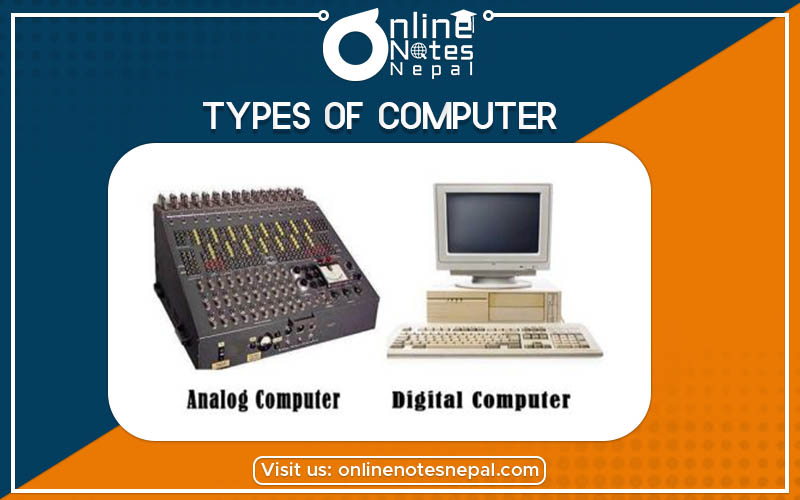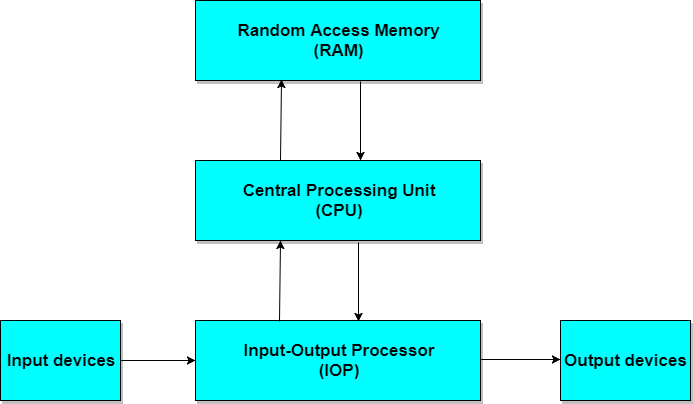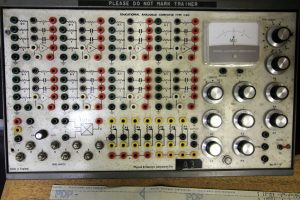Published by: Sujan
Published date: 18 Jun 2021

The types of computer can be distinguished usually on the basis of manner of handling data, accuracy, signal processing, and working mechanism. They are:
It is a digital system that performs various computational tasks. The word digital implies that the computer represents the information by variables that take a limited number of discrete values. The components process the values internally by the components that can maintain a limited number of discrete states. They don't measure physical values. It operates on data, including magnitudes and letters.
Digital computers use the binary number system, which has two digits: 0 and 1. Bits are binary digits so pieces of information are represented in the digital devices in groups of bits. Groups of bits do represent not only binary numbers but also other discrete symbols, such as decimal digits or letters of the alphabet by using various coding techniques.
Examples are IBM PC, Apple/Macintosh, etc.

Fig: Block diagram of Digital Computer
These types of computers process analog data. It is quite different from the digital, which makes use of symbolic numbers to represent results. These computers do only one task at a time. They store data in a continuous form of physical quantities such as length, voltage, current, etc. and perform calculations with the help of measures. It is quite different from the digital ones, which makes use of symbolic numbers to represent results.

Fig: Analog Computer
An analog computer makes use of continuous values and not discrete values. Because of this, processes with an analog device cannot be repeated for exactly equivalent results. Unlike digital ones, analog computers are immune to quantization noise. Some of the common computing elements found in analog are function generators, integrators, comparators, and multipliers.
Examples are Slide Rule, Speedometer, Barometer, Lactometer, Seismograph, etc.
| S.N. | Analog Computer | S.N. | Digital Computer |
| 1. | These computers work with physical values such as temperature, pressure, etc. | 1. | These work with binary digits which are 0s and 1s. |
| 2. | These are based on continuous data. | 2. | These are based on discrete data. |
| 3. | It has very low accuracy. | 3. | It has high accuracy. |
| 4. | It has limited storage capacity. | 4. | It has a high storage capacity. |
| 5. | It is a single-purpose computer. | 5. | It does a multi-purpose job. |
| 6. | Its cost is low and portable. | 6. | It is expensive and not portable. |
| 7. | Its signal processing can be done in real-time and consumes less bandwidth. | 7. | It consumes more bandwidth to carry the same information. |